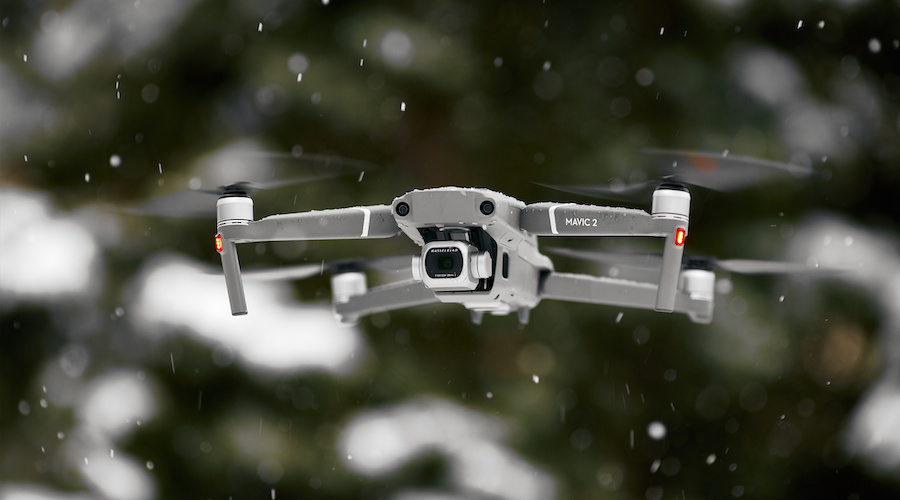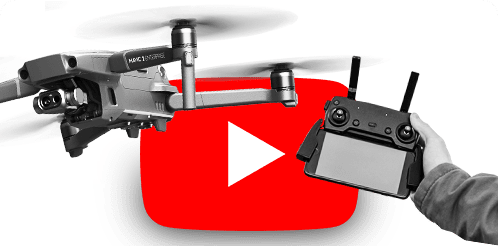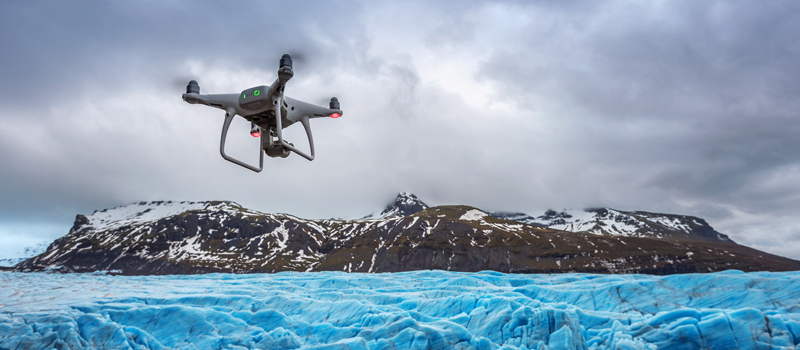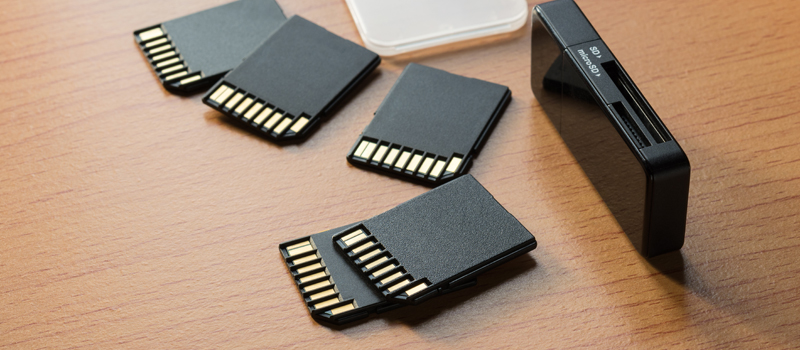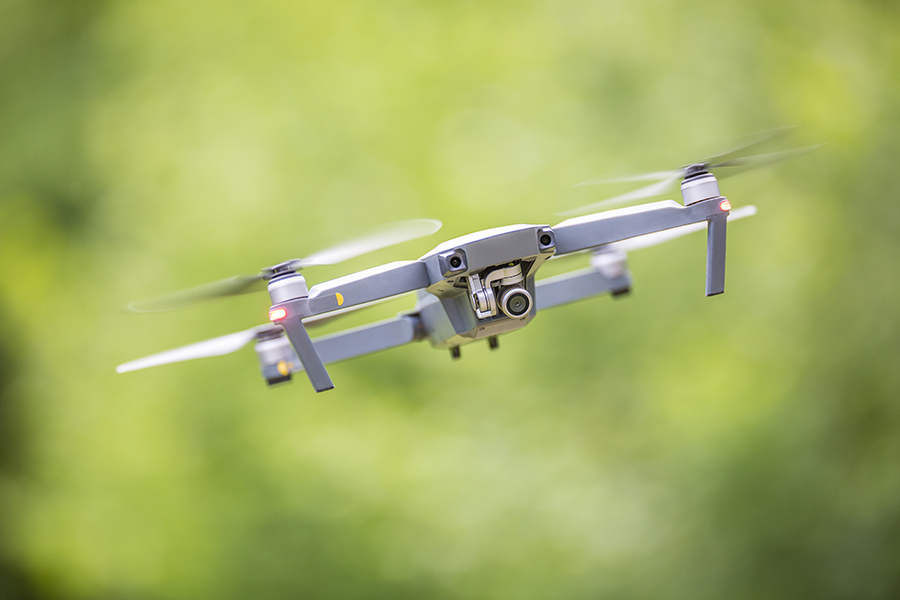-
The elements of rain and snow
-
What can happen to a moisture-damaged drone?
-
How water-resistant is your drone?
-
The effects of extreme cold on flight performance
- Drone News Update
-
What to do when your drone suffers moisture ingress
- Cut off the power supply immediately
- Allow the internal components to dry out
- Check your warranty coverage
-
Final thoughts
This is a huge generalization, but we believe that the people who fly drones are those that can be considered to be on the adventurous side. What can possibly compel anyone to take a thousand-dollar piece of electronics and fly it as high as a few hundred feet? Whenever anyone flies a drone, there’s always an element of calculated risk and an acceptance that things can go wrong at any point.
However, there are limitations to the level of risk that drone pilots should take. In this article, we’re tackling something that a lot of curious drone pilots always ask about – is it alright to fly a drone when it’s raining or snowing?
The elements of rain and snow
When we talk about rain and snow, certain aspects of the weather are immediately obvious. Of course, your drone will need to contend with battling moisture incursion whenever it hits a drop of rain or snow. We’ll get to the consequences of excess moisture on drones, but how about other weather phenomena that come along with rain or snow?
Whether it’s raining or snowing, visibility is severely reduced due to fogging. Take note that visual line-of-sight is a requirement whenever you fly a drone. When it starts fogging, the range of VLOS is reduced, which means you’ll almost certainly need to rein in your drone. Reduced visibility means that getting into a drone crash becomes more probable and that recovery of your crashed drone becomes more difficult.
If your drone uses optical sensors for stabilization or obstacle avoidance, then flying over snow can offer a unique set of challenges. Optical sensors can barely identify the pure white surface of drones, making it difficult to identify a surface of the snow as an “obstacle.” As an aside, a blanket of snow also creates a lot of glare which can ruin otherwise good aerial shots.
If there’s heavy precipitation but good visibility, then there’s a good chance that strong winds are blowing. Despite all the stabilization technologies of drones, a single strong gust of wind can be enough to disrupt the flow of air that a drone relies on for lift. Even if there isn’t heavy rain, strong winds would be enough reason to stop drone operations.
The point is that there is more than just the rain or snow to watch out for when flying a drone in inclement weather. Even if your drone is completely waterproof, it is not immune to crashing into a tree because of poor visibility or getting knocked off the sky because of a strong gust of wind.
What can happen to a moisture-damaged drone?
Just like any electronic device, letting just a little bit of moisture inside your drone can lead to a host of problems. Even if a problem doesn’t pop up right at the moment of moisture exposure, it can accelerate the corrosion of any metal parts. Over time, this leads to diminished electricity conduction and mechanical strength.
Within a smaller time frame, the exposure of conductive components like wires and motors can lead to a short circuity. This happens when the positive and negative terminals of a power source become connected without load. With no outlet for the current, it is rapidly converted to heat energy. This further damages the wires, motors, and control board in a drone.
Drones rely on all of its components working harmoniously together to keep it flying. If any of the motors or wires fail, you will probably start losing control of the drone until it eventually crashes. With its inner circuitry fried, a water-damaged drone will almost certainly need to be sent in for massive repairs.
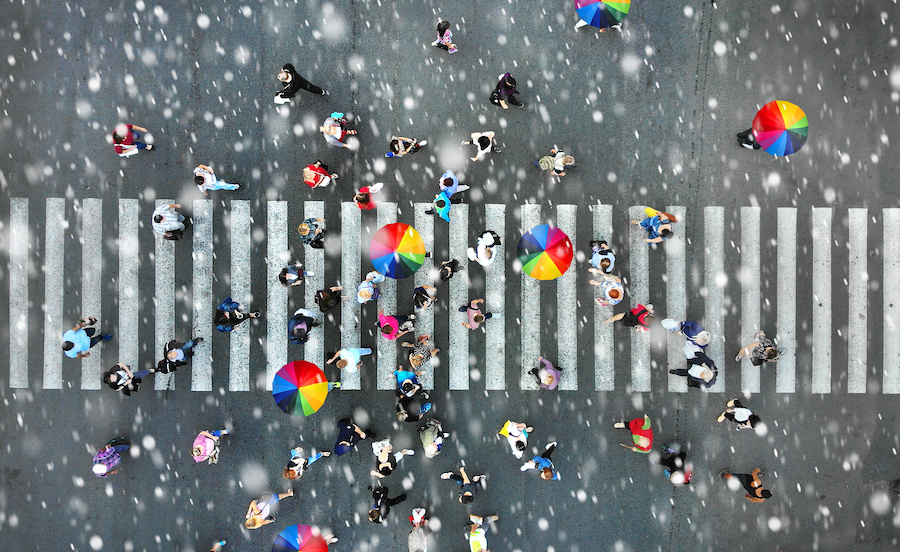
How water-resistant is your drone?
If you think that flying a drone during the rain is worth the risk, the first thing you need to do is to take stock of the water-resistance rating of your drone. Not all drones are created equally in this aspect. At this point, it’s worth mentioning that drones with good water-resistance are probably the most expensive models. If you own any drone from the DJI Mavic line, we suggest grounding at the first sign of rain.
The best way to tell the degree of water-resistance of your drone is by looking at its IP rating. IP stands for Ingress Protection and is an internationally recognized standard that represents how well a device is protected from the ingress of both solids and liquids. An IP rating is denoted by two digits – the first representing the degree of dust protection, and the second representing the level of water-resistance.
To cite a few noteworthy examples, the DJI M200 series of drones has an IP43 rating. This means that each of the drones is impervious to ingress by solid particles down to 1 mm in diameter and cannot be damaged by water spraying up to an angle of 60 degrees. In contrast, the DJI Agras T16 drone that is designed for crop spraying has an IP 54 rating. This denotes protection against dust and water splashes from any direction.
Completely waterproof drones are a specialty product and are quite rare. The Swellpro brand is one of the few brands that specialize in waterproof drones, as emphasized by the completely buoyant Spry Plus and SplashDrone models. Even with the claims of being waterproof, water ingress in these drones has been reported by a good number of buyers.
If you’re unsure about your drone’s suitability with flying under the rain, then it’s best to consult your manual or the manufacturer. The thing you need to understand is that even water-resistant drones like the DJI M200 aren’t designed to sustain flight under the rain. The best that such drones provide is a window for you to ground your drone once the rain starts, hopefully without suffering long-term damage.
The effects of extreme cold on flight performance
Flying a drone under a light snowfall is usually not as big of a problem as flying under the rain. The moisture exposure isn’t so bad, and snowfall doesn’t typically come with strong gusts of wind. What you need to watch out for is the effect of cold weather on air pressure and battery management.
Batteries like to keep warm. When you fly a drone in frigid weather, expect it to drain drastically faster than usual. If you’re not used to flying in cold weather, it would be best to be conservative about how far you fly the drone. Even the drone’s return-to-home (RTH) function may fail to consider just how quickly the battery can get drained. Try and warm up those batteries before using them and try to finish up your operation as quickly as possible.
Another factor contributing to reduced battery life is the drop in air pressure. Reduced air pressure means that the drone generates lower lift and propulsion at the same speed of rotation of the propellers. You may find that getting Point A to Point B takes a longer time in winter than in summer, consequently using up more of your battery stores.
Should you need to ground your drone to swap out batteries, take the time to inspect the drone for signs of moisture ingress or ice formation. In some regions, winters can be both wet and cold, which may result in your drone picking up a lot of moisture. This moisture can eventually freeze. If left unchecked, your drone can end up being weighed down by ice which can also hamper the rotation of its propellers.
What to do when your drone suffers moisture ingress
Rain doesn’t always come with a warning sign. It could be sunny one minute, and rainy on the next. When this happens, you may not have enough time to recover your drone and prevent it from getting exposed to the rain. Should you be lucky enough to still recover your drone while it’s raining, here are the steps to do to prevent long-term damage.
Cut off the power supply immediately
Anyone familiar with electronics knows that the first thing to do when an electronic device gets wet is to turn off the power supply. This stops the current supply to the electrical components, thereby preventing damage due to a short circuit. As soon as you recover your drone, remove its battery immediately.
Allow the internal components to dry out
Even if water got into the internal components of your drone, all hope is not lost. Once you’re in a safe dry place, you can try opening up the drone and wiping away any beads of moisture left behind. Allow the components to air-dry over the next couple of days before attempting to power your drone again. Be patient – two or three days of drying might be needed.
Take note that just because your drone can take off again doesn’t mean that all is well. Your drone may still have suffered some “invisible” damage. You may suffer intermittent failure in transmitter communication, or you may have dropouts in the GPS signal. If your ESC has suffered damage, then the balance of the drone may suffer resulting in a quick crash.
Check your warranty coverage
If it doesn’t seem possible to do repairs on your drone yourself, then it would be best to send it in for servicing. Pilots with drone hull insurance may have coverage for water damage, which means that they might not need to pay out of pocket for repairs.
Final thoughts
Weather is simply one of the things that a drone pilot will have to deal with. It seems simplistic to tell drone pilots to check for weather reports before they go out flying. The truth is that there will always be an element of unpredictability to weather and that the best that the drone pilot can do is to prepare for the worst.
Unfortunately, there aren’t many drones that are made to withstand extreme humidity or precipitation. Building weather-resistance into a drone tends to make them both heavy and expensive. Flying under a light snowfall is a lot more manageable, although you’ll need to watch out for diminished battery life and flight performance.
In any case, even the smallest bit of moisture damage is usually bad news for a drone. We recommend avoiding flying your drone if it even looks like it’s going to rain. If you’re flying under snowfall, try and not to push the drone to its limits.
Note: Pilot Institute is part of the Amazon Associates program. We may earn a commission on sales, although this does not increase the cost for you.
